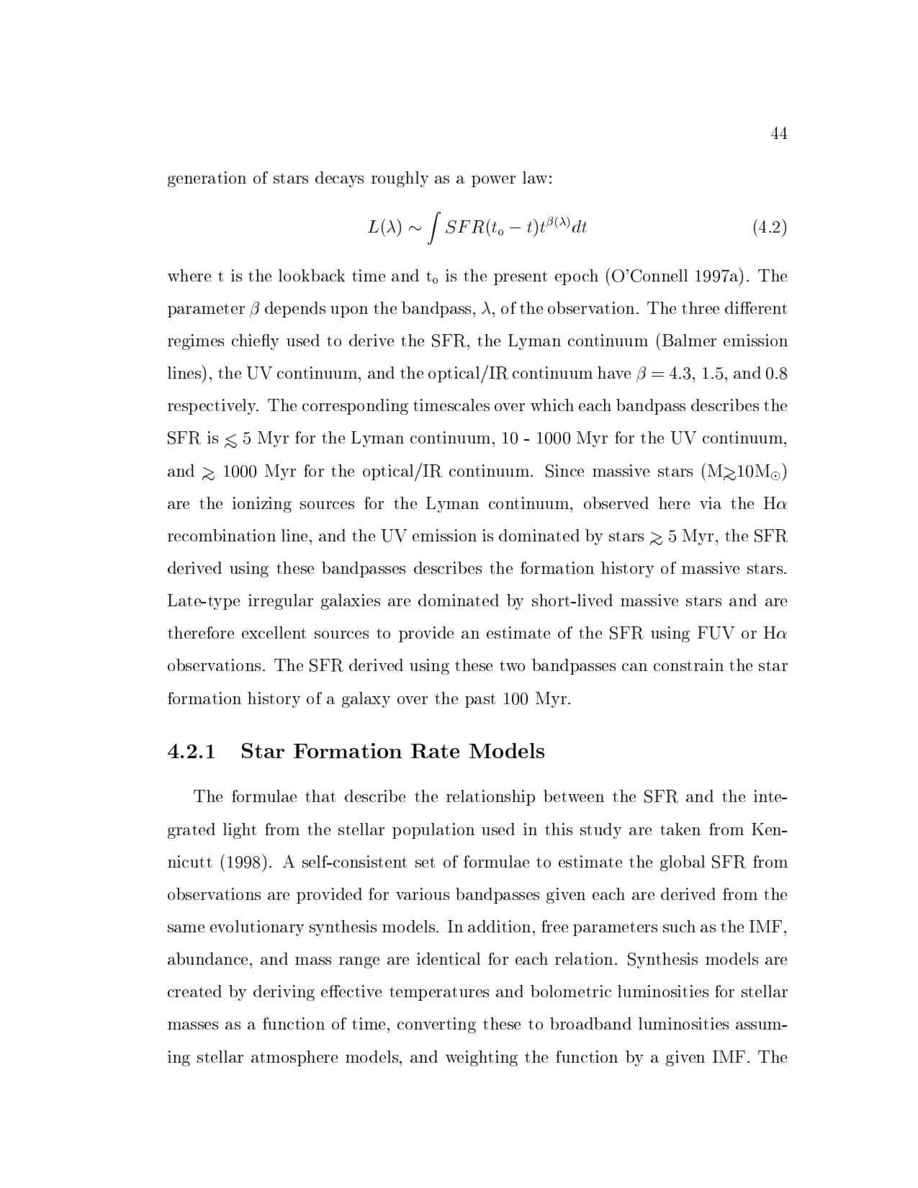
44
generation of stars decays roughly as a power law:
L
Z
S
F
R
t
o
,
t
t
dt
4.2
where t is the lookback time and t
o
is the present epoch O'Connell 1997a. The
parameter depends upon the bandpass,
, of the observation. The three di erent
regimes chie y used to derive the SFR, the Lyman continuum Balmer emission
lines, the UV continuum, and the optical IR continuum have = 4.3, 1.5, and 0.8
respectively. The corresponding timescales over which each bandpass describes the
SFR is
5 Myr for the Lyman continuum, 10 - 1000 Myr for the UV continuum,
and
1000 Myr for the optical IR continuum. Since massive stars M
10M
are the ionizing sources for the Lyman continuum, observed here via the H
recombination line, and the UV emission is dominated by stars
5 Myr, the SFR
derived using these bandpasses describes the formation history of massive stars.
Late-type irregular galaxies are dominated by short-lived massive stars and are
therefore excellent sources to provide an estimate of the SFR using FUV or H
observations. The SFR derived using these two bandpasses can constrain the star
formation history of a galaxy over the past 100 Myr.
4.2.1 Star Formation Rate Models
The formulae that describe the relationship between the SFR and the inte-
grated light from the stellar population used in this study are taken from Ken-
nicutt 1998. A self-consistent set of formulae to estimate the global SFR from
observations are provided for various bandpasses given each are derived from the
same evolutionary synthesis models. In addition, free parameters such as the IMF,
abundance, and mass range are identical for each relation. Synthesis models are
created by deriving e ective temperatures and bolometric luminosities for stellar
masses as a function of time, converting these to broadband luminosities assum-
ing stellar atmosphere models, and weighting the function by a given IMF. The
